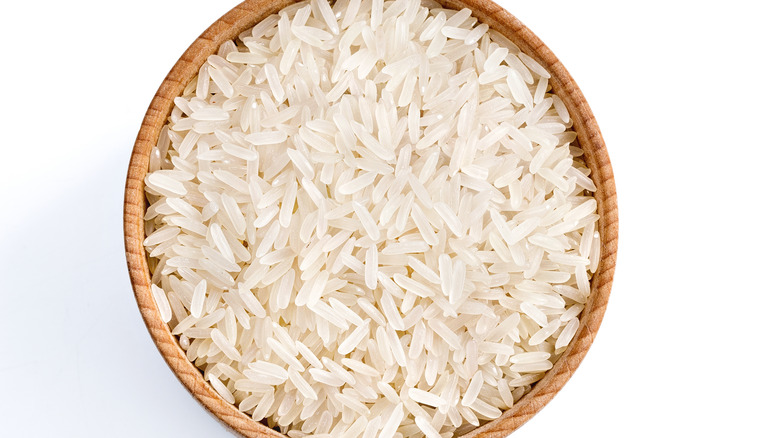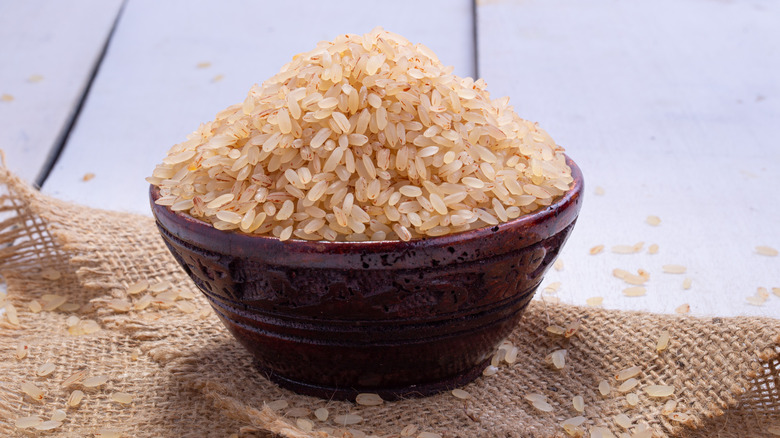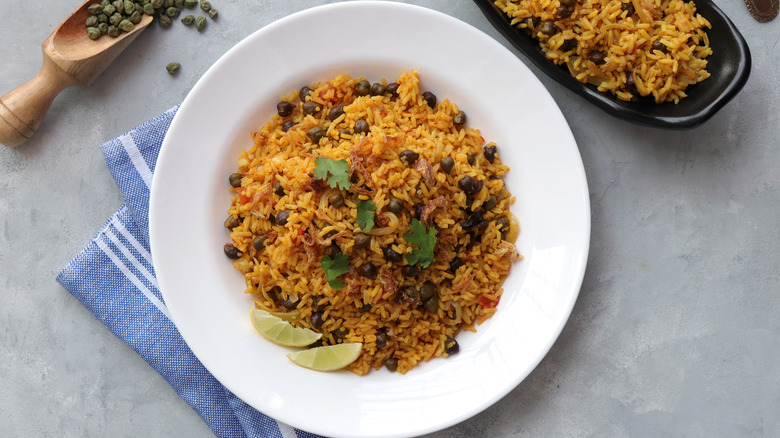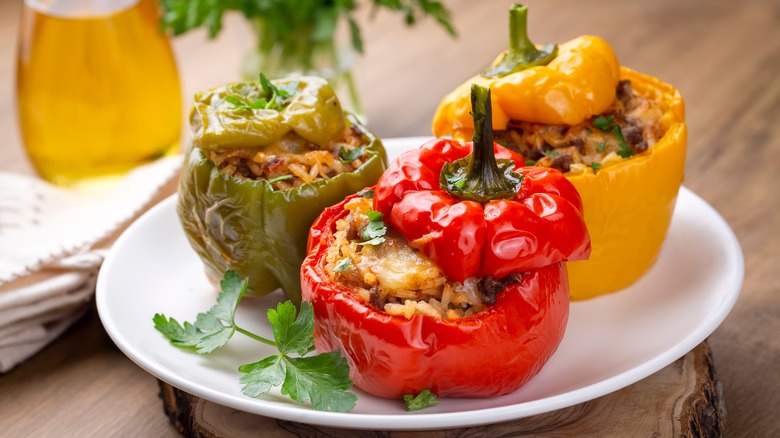What Is Parboiled Rice And Why Should You Cook With It?
Rice is a common and easy side dish to add to many meals, but most types of rice take a significant amount of time to cook as the starches need to break down. Parboiled rice is not cooked, but it is processed a bit differently than traditional white or brown rice, and there are some key benefits to this. Asian and African cultures have long followed this method to help speed up the cooking process, but parboiled rice may also offer better access to nutrition, which makes it a worthy choice for many meals.
After harvesting rice, processors remove the inedible hull, or sheath-like covering, from the exterior of the rice, creating brown rice. If the procedure continued the process and removed the bran, that would result in the production of white rice. Parboiled rice is different because the process begins with the complete grain (hull and all) being soaked, steamed, and ultimately dried thoroughly. After this, the producer removes the hull, resulting in parboiled rice. At this point, it's still necessary to finish cooking it prior to consumption, but doing so tends to take less time. It's versatile enough to use in various dishes, casseroles, and soups.
Benefits of parboiled rice
Parboiling makes it faster to cook, improves the texture, and creates a soft yellow hue, but it also changes the nutritional makeup of the rice as well. WebMD notes that a cup of dry parboiled rice has 194 calories, 0.5 grams of fat, and 41 grams of carbohydrates. Parboiled rice also does not cause as large a spike in blood sugar after consumption, unlike white rice, because it has a low glycemic index. It has about twice the amount of fiber (about 6% of the women's recommended daily dose and 4% of men's).
It also has a full gram of fiber and 5 grams of protein, along with a higher amount of calcium and iron in it than traditionally prepared long grain white rice. This starchy side offers other benefits, too, including being rich in niacin, offering about 23% of the recommended daily intake per cup of cooked rice. It includes about 19% of the recommended B-6, and is a good source of magnesium, potassium, and zinc, all of which are important nutrients your body's organs need. If you love pairing meats and vegetables with rice but know that traditional forms are very low in nutrition, a switch here could lead to a significant improvement in vitamin and mineral intake.
All of these benefits may also lead to improved gut health by working as a prebiotic, reduction in diabetes symptoms due to the lower glycemic index, and better metabolism, though your benefits could be much different.
How to cook with parboiled rice
If that all sounds good, the next step is to add it to your diet. Cooking this rice is easy enough to do with several options available. You can use a standard rice cooker or a stovetop pan with a lid. There are variations between brands, so be sure to follow the directions on the package to learn how long to cook it. Most of the time, you'll need about 2 ¼ cups of liquid per cup of dry rice (but that can also change based on the manufacturer). It has a very neutral flavor, so add in the spices you enjoy to make it your own. Olive oil, salt, and pepper are some options. Then, consider replacing some of the water with broth for added flavor.
You can use a microwave to cook parboiled rice as well. To do so, place a cup in a microwave safe dish along with 2 ¼ cup of water, or use the directions provided by the manufacturer. Typically, you'll need to cook it for about five full minutes on a high setting. Then, reduce the power by half and cook for another 20 minutes. Before you remove it from the microwave, allow it to sit for at least five minutes to allow it to cool enough to handle it.
Dishes you can make with parboiled rice
Use parboiled rice in various dishes. You can use it in place of most other rice with ease. Use it as a side dish with your favorite saucy meat and veggie mixture on top. Cook it with chicken, a creamy soup, and broccoli in a covered dish in the oven for a casserole that's rich and decadent. Add it to Mexican and Spanish dishes, including paella. You can replace your traditional white rice with parboiled in just about any recipe, including your favorite rice puddings.
You can make a great fried rice using parboiled rice. Cook it fully before adding it to a frying pan with your favorite Asian-influenced additions and scramble an egg in it. You can also use it in Indian-style Keema dishes, Greek dolmades recipes with grape leaves, and stuffed peppers with a rich, tangy sauce and your favorite ground meat.
To add it to soups, cook it nearly completely and then add to the last 20 or so minutes of cooking your soup down. That's a great way to add some heartiness to soup and maintain some of the added nutritional benefits.



